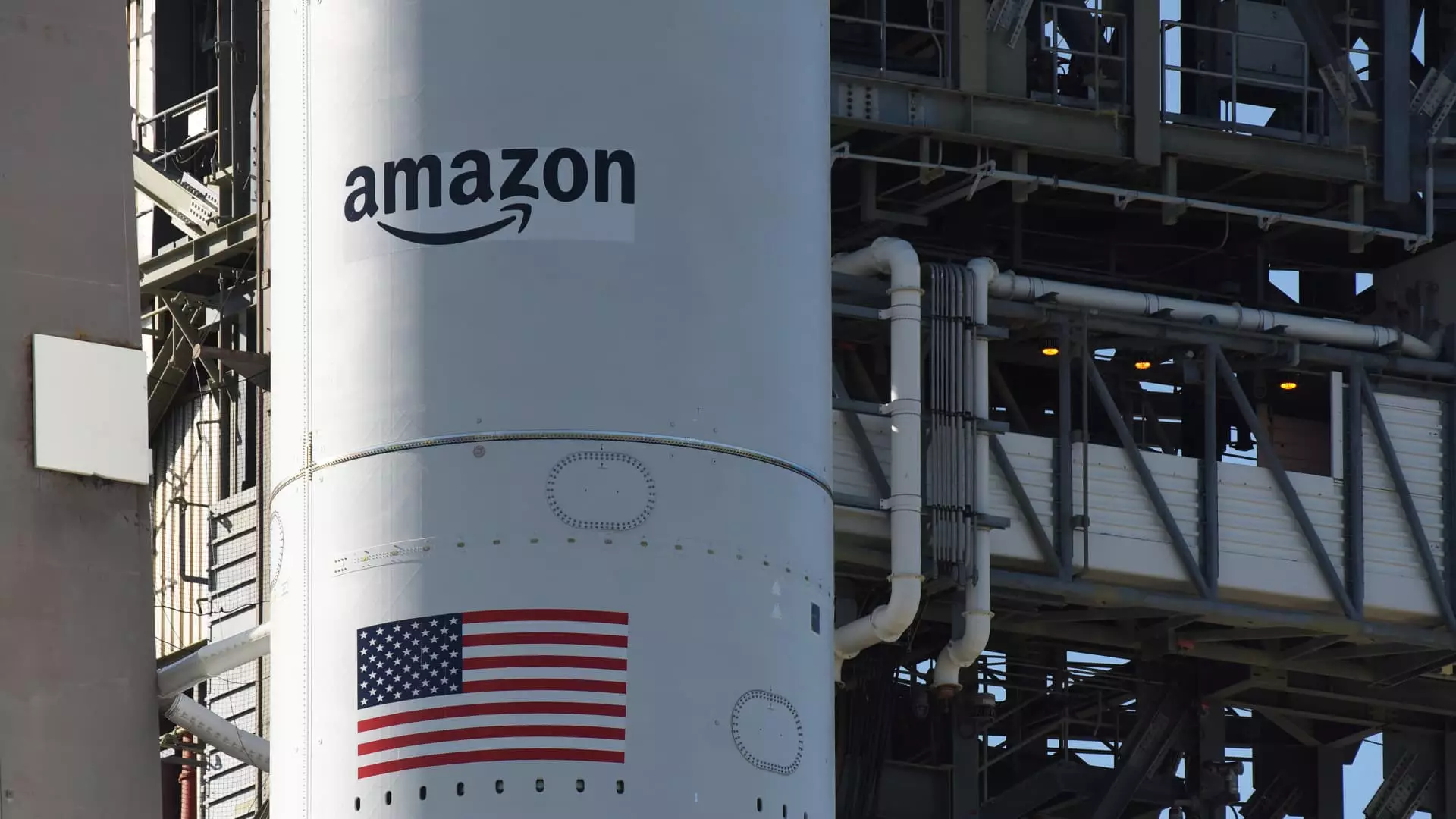In an ambitious venture to reshape the landscape of global internet connectivity, Amazon’s Kuiper satellite project recently faced a significant setback. Scheduled to launch 27 satellites aboard a United Launch Alliance (ULA) rocket from Cape Canaveral, Florida, the mission was thwarted by tumultuous weather conditions. ULA reported that a compromised launch window was the result of “stubborn cumulus clouds” and heavy winds, a frustrating obstacle for a project that is crucial to Amazon’s future in the competitive space of internet services. This highlights not just the fragility of launch schedules, but also the unpredictability of natural phenomena in a field where timing is everything.
Amazon’s Vision Against Competitors
Since Amazon first announced its plans for a constellation of low-earth orbit satellites six years ago, the stakes have grown exponentially. The company’s ambition taps into a lucrative market for high-speed, low-latency internet, aimed at consumers and enterprises alike. The stakes are particularly high with SpaceX’s Starlink establishing a formidable lead through its already operational network of around 8,000 satellites. The presence of Starlink, led by the enigmatic Elon Musk, puts tremendous pressure on Amazon to accelerate its timeline and deliver on promises.
But it’s not merely competition that defines Amazon’s journey; it’s the sheer scale of their undertaking against a backdrop fraught with challenges. With commercial service anticipated later this year and deadlines imposed by the Federal Communications Commission (FCC)—requiring Amazon to position 1,618 satellites in orbit by mid-2026—time is of the essence. The pressure mounts as each delay could translate into a loss of market share and a tarnished reputation in a domain where consumer expectations for connectivity are ever-increasing.
High Stakes and Strategic Planning
In this fast-paced race, strategic planning has never been more vital. Amazon’s ability to ramp up production post-launch and prepare for subsequent missions is crucial. They are already in the process of prepping additional satellites to travel on ULA’s Atlas V rockets, demonstrating commitment and foresight. Yet, the hurdles are as uncontrollable as they are numerous. Each failed launch attempt sends ripples through logistical machinations, requiring not only patience but adaptability—a hallmark of any successful enterprise.
The competitive environment serves not just to motivate but to illuminate the differentiating factor between established players and startups. Amazon’s entry into the satellite internet domain is not merely about the technology; it’s about creating a narrative that positions them not just as an internet provider, but a pioneer in cutting-edge global communication. This narrative must be carefully crafted amid the chaos of unexpected weather and logistical challenges.
The Broader Implications
Ultimately, the trajectory of Amazon’s Kuiper project will have far-reaching implications, not just for the company but for the world. A successful deployment of these satellites could bridge digital divides, offering underserved regions access to reliable internet—an essential resource in our increasingly online world. However, this mission isn’t solely about altruism; it’s a calculated move that promises substantial returns if executed correctly. Yet, as we see, even the boldest plans can be foiled by forces beyond control, reminding us that innovative aspirations must always account for the unpredictability of nature. The question now lingers: will these hurdles become stepping stones or roadblocks in Amazon’s quest for connectivity dominance?


Leave a Reply
You must be logged in to post a comment.